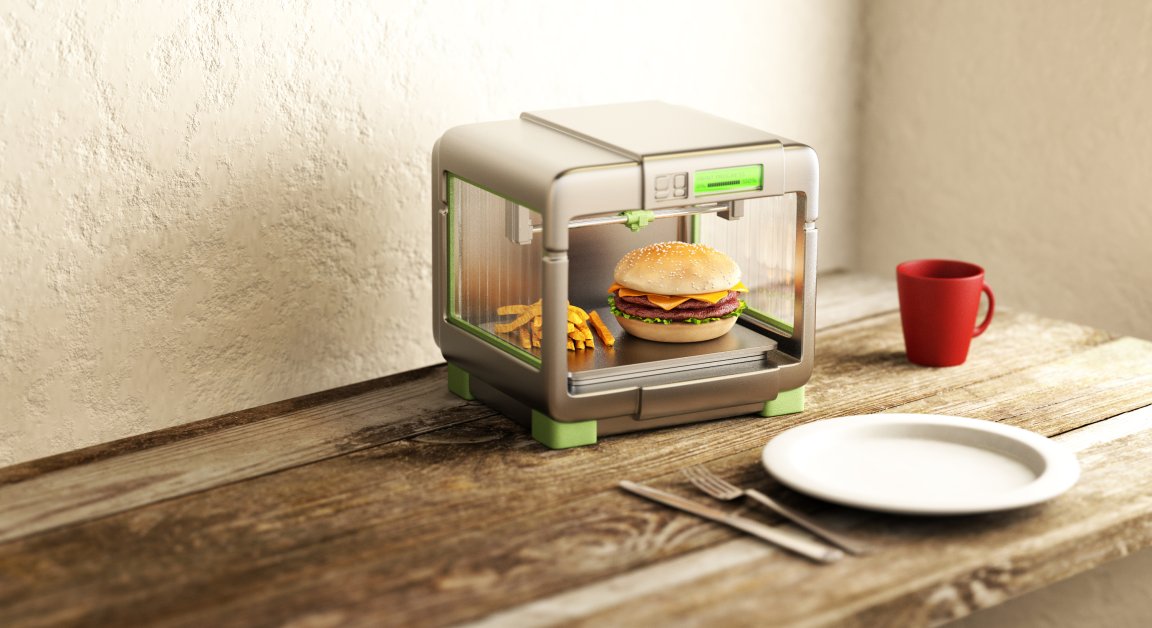
Print-on-Demand
From drones to hyperloops, retailers have no shortage of big ideas for getting products to consumers more quickly in the future. However, if advancements in 3D printing continue on their current trajectory, the very concept of shipping could become obsolete. Instead, we’ll simply print whatever we want right in our homes.
The idea behind 3D printing, also known as additive manufacturing, is fairly straightforward. The printer creates a three-dimensional object from a digital file one layer at a time. The process has been around since the 1980s, and while early 3D printers were large, expensive, and used primarily for industrial prototyping, that’s not the case anymore.
Today, 3D printers come in a range of sizes and price points, and they can be used with a seemingly limitless variety of materials. We have printers that can replicate human organs, ones that can construct entire houses, and even printers that can craft custom pizzas.
Anyone who wants a 3D printer for their home can now buy one for as little as $400. Yet advanced systems still cost thousands of dollars, and even those are fairly limited in terms of capabilities. Some can only print with certain materials, and simply printing in two different colors is too much for many of today’s systems.
So, when will we all have 3D printers that can actually print anything we want — and do so faster than an Amazon drone can deliver it to us?
Unlimited Potential
According to the 2016 Wohlers Report, an annual global analysis of the state of 3D printing, in 2015 manufacturers sold more than 278,000 desktop 3D printers costing less than $5,000.
The U.S. alone has 125.82 million households, so even if all of those printers found their way into private residences and not offices, schools, libraries, or maker spaces, only about 2.2 out of every 1,000 households in the nation would have a 3D printer.
Clearly, home 3D printers are far from ubiquitous, but that doesn’t mean they won’t one day be.

Bernard Luthi, CEO of electronics retailer Monoprice, thinks we’re about 10 years away from most households having at least one 3D printer that’ll be capable of printing most things. However, he told Futurism that he doesn’t think we’ll have 3D printers that can print anything until about 2038.
“This transformation is not going to happen overnight. There are still obstacles that we, as an industry, need to overcome,” said Luthi, noting the need for the technology to advance, and for printers that are truly consumer-friendly, affordable, and reliable to hit the market.
“However, we have made great advancements in the past few years, and can plan to see this market follow a similar trajectory of progress as other rapidly emerging technologies have in the past,” he added.

Dávid Lakatos, Chief Product Officer at Formlabs, thinks the transition will take a bit longer.
“As fun as it may be to imagine a future where there is a 3D printer in every home, I don’t see that happening in my lifetime, at least not for the creation of high-quality end-use products,” he told Futurism.
“It just isn’t realistic for everyday items to be printed in the home yet, not when parts made with injection molding can be made so inexpensively and shipped quickly,” said Lakatos.
He thinks it’s more likely that we’ll first see 3D printing used more broadly in mass customization, such to make custom earbuds at scale, as Formlabs is currently doing. Eventually, Lakatos sees companies such as Amazon and Target using 3D printing to customize products prior to delivering them to consumers.

If home 3D printers ever do remove retailers from the equation, the impact on our daily lives will be tremendous, according to Luthi. Not only will we have the ability to create exactly what we want the moment we want it, we could also experience new levels of efficiency that ultimately improve our quality of life.
“Once 3D printing is incorporated into our daily lives, it will help automate our mundane tasks and give us more time to focus on things we actually want to do,” he told Futurism. “Instead of going to the grocery store, we’ll print our food, hopefully freeing up time to live our lives more fully in other areas.”
As Luthi noted, the possibilities for 3D printing are truly endless. With each new advancement in this technology, we get closer to that day when we can print anything we can imagine.